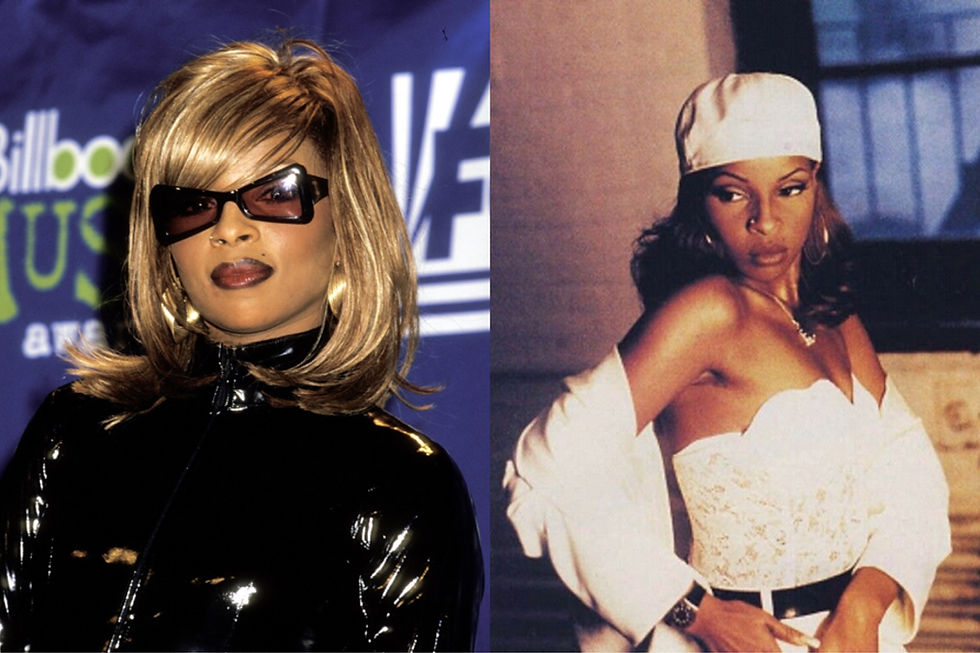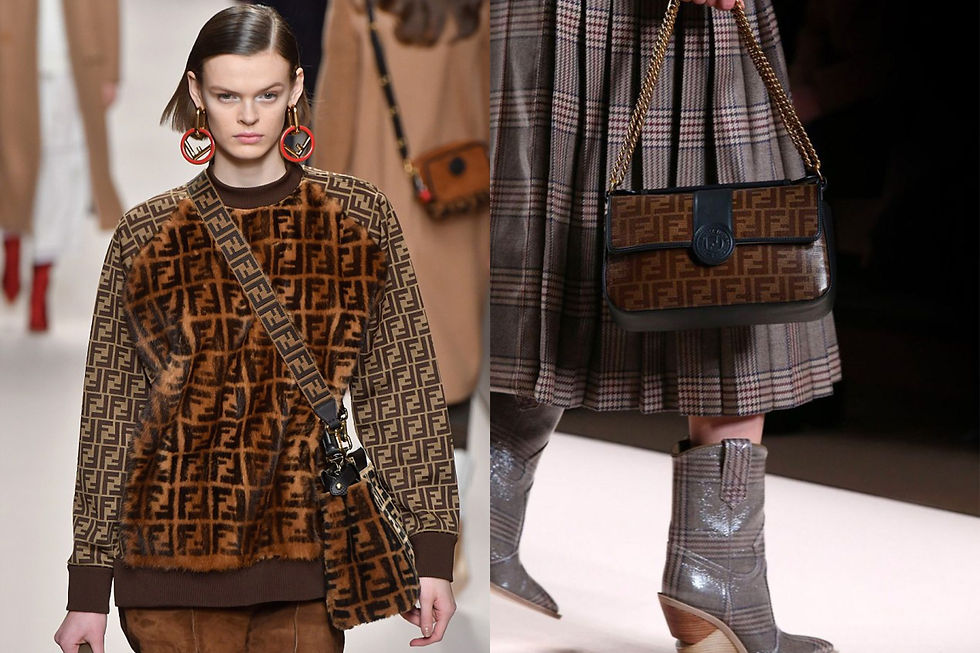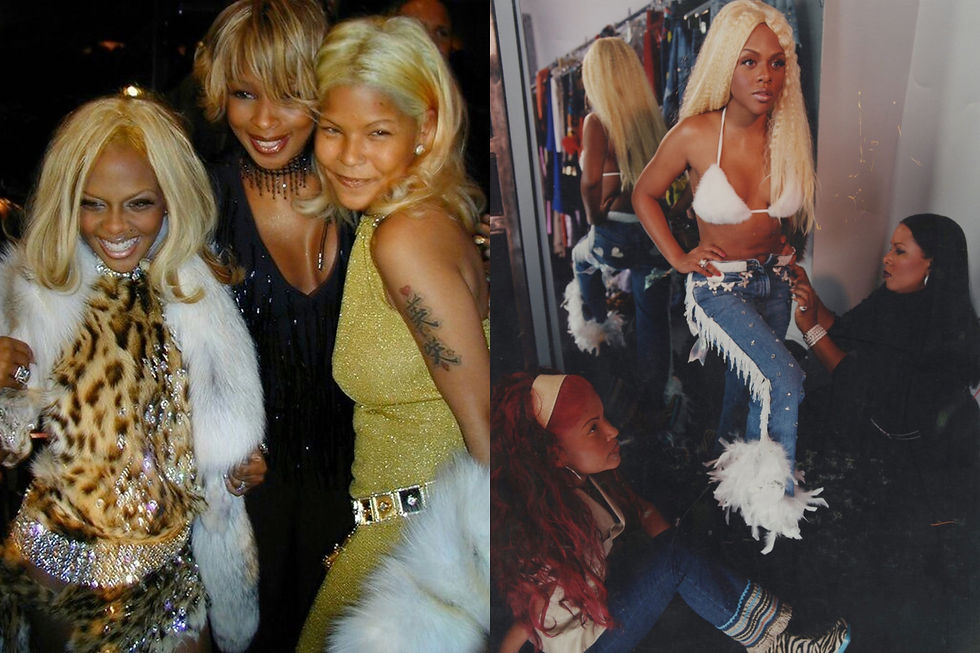
When asked to think of style icons in music during the 90s and early noughties, you’ll likely hear Lil Kim’s name thrown into the mix at least once or twice. What about Missy Elliott’s eccentric yet laid-back style, or Foxy Brown’s sultry high fashion looks? We often hear about how these music icons have influenced later generations of fashion – which is in part, true. However, one of the most important yet too often overlooked names in hip-hop fashion is Misa Hylton.
A stylist and designer from New York, Hylton began building her career in fashion at the age of 17. Her first job as a stylist was working with Jodeci to help in defining their image. Though her suggestion of draping the R&B group in hoodies, leather, and caps facing backwards initially fell on deaf ears, she eventually persuaded Andre Harrell to trust her (at the time) unorthodox vision. Soon after, Jodeci’s career reached new heights, and they set the stage for several successive R&B groups.

After only a few years in the game, the fashion pioneer had grown an impressive portfolio – styling some of the biggest names in music. As mentioned in the Netflix documentary The Remix: Hip Hop X Fashion, Hylton became renowned for her ability to “bring that hip-hop swagger to the R&B arena”. She was soon styling her clients for publications like Vogue, Harper’s Bazaar, and Vibe; and became responsible for a number of esteemed looks within the music world.
Soon after Jodeci, Hylton landed her first female client – Mary J. Blige. At the time, Blige was transitioning to a more feminine image and acknowledges Hylton as the only person she trusted with her appearance. As was revealed on The Remix, Hylton worked with Blige to ease her out of her comfort zone and to settle on an image that she identified with. It was through artists such as Blige and Missy Elliott that Hylton popularised the harsh dark liner and light lipstick combo within mainstream fashion; while also integrating hints of traditional glam and femininity into their signature tomboy looks.

Hylton was also the mastermind behind Lil Kim’s monochromatic looks in the 1996 music video 'Crush On You'. From bright coloured wigs to matching fur coats, hoop earrings, and lingerie – each outfit made a statement; revolutionising what was once dismissed as ‘ghetto’ fashion. In that same year, Hylton was styling Foxy Brown for her ‘I’ll Be’ music video featuring Jay Z, and Mary J. Blige’s ‘You Are Everything’.
Another memorable moment in fashion was Lil Kim’s red carpet appearance at the 1999 MTV VMAs. Donning a one-sleeved purple jumpsuit and a matching sequin pasty to cover her left breast, Hylton topped off Lil Kim’s controversial look with a purple wig and Steve Madden wedge heels. This striking outfit has since gone down as one of VMA’s most iconic fashion moments of all time.
Though these fashion statements are now moodboard staples, they were certainly a grave risk back in the day. In fact, most of Lil Kim’s looks were often criticised by mainstream media at the time. While she enjoyed expressing her sex appeal through her wardrobe, many publications called the rapper out for her revealing clothing – stating that her fashion choices were "outrageous" and not “ladylike” enough to be deemed acceptable.

People Magazine 2000 - Worst Dressed. Via Twitter: @Epithymia__
Yet, Hylton’s stylings have clearly shaped the music and fashion industries into what they are today. Lil Kim’s daring ensembles have undoubtedly paved the way for modern rappers, including Megan Thee Stallion, Nicki Minaj, and Cardi B – to assert their femininity and sexuality within a male-dominated genre.
The same designer logo-print clothing that was once branded “too flashy” in the early 2000s are the same looks now plastered all over runways. While the infamous Fendi ‘FF all-over’ trend was revived in Karl Lagerfeld’s Fendi Fall/Winter 2018-19 collection, Misa Hylton often collaborated with designer Dapper Dan to style her clients using the same prints. One notable example of this is G. Dep’s 2001 music video ‘Let’s Get It’, featuring P. Diddy and Black Rob.

Fendi Fall/Winter 2018-19 collection
One reason that Misa Hylton is so revered within the music and fashion industry is that she has always been able to meet her clients in the middle. As noted by feminist author Joan Morgan, the fashion innovator never looked to diminish or overwrite the personal style of her clients, but rather chose to work around their tastes – adding her own unique elements to elevate their look.
Despite her print on the industry, Hylton’s life was far from glamorous for a long time. Sacrificing her house, the talented stylist found herself homeless and often had to purchase designer items for her clients to wear using her own card. Too often, she would lose her clients to well-renowned stylists as they grew in popularity. However, Hylton states that her experiences changed her perspective on the world and shaped her into the fashion mogul that she is today.

Source: Misa Hylton
More recently, Misa Hylton has been responsible for styling Beyonce and Jay Z’s 'Apeshit' music video. Hylton has also had a hand in dressing emerging artists such as Flo Milli, and is a global creative partner for MCM. Since 2012, the trailblazer has been running the Misa Hylton Fashion Academy (MHFA). Combining her passion for teaching with her affinity for fashion, Hylton has dedicated the academy to “grooming the next generation of young creatives interested in pursuing a career in fashion”.







![Eem Triplin Unpacks His Next Album, Tour Ambitions, Fashion, and the Inspirations Behind His Music [Interview]](https://static.wixstatic.com/media/781d42_ab0be2958027475688580bbb02a1ab1a~mv2.jpg/v1/fill/w_390,h_390,fp_0.50_0.50,q_90,enc_auto/781d42_ab0be2958027475688580bbb02a1ab1a~mv2.webp)









Misa Hylton's transformative influence on fashion and music is undeniable. Her innovative styling has inspired me to embrace timeless pieces that exude confidence and individuality. In my quest for a versatile wardrobe, I discovered capsule wardrobe women collections, which have been a game-changer. The curated selection of classic designs not only simplifies my daily dressing but also ensures I always feel chic and empowered. Investing in these essentials has truly elevated my personal style.